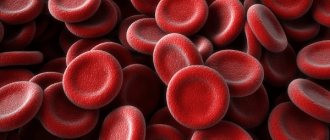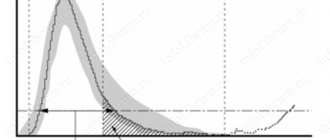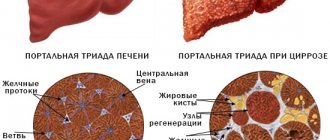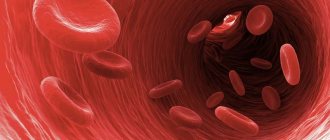Do not self-medicate. At the first signs of illness, consult a doctor.
In the vast majority of cases, the reasons lie in the course of some disease. It is extremely rare that the sources are physiological factors; for example, such a problem can arise during pregnancy.
When the number of red blood cells decreases, a person notices changes in well-being. Symptoms may include lethargy and weakness, decreased blood pressure and increased heart rate, lethargy and fainting.
The basis of diagnosis is a general clinical blood test. However, the results of such a study cannot indicate the etiological factor, so the patient is required to undergo a whole range of diagnostic measures.
A decrease in red blood cells can be eliminated by conservative methods, namely by taking medications and folk remedies. However, the problem cannot be completely eliminated without treating the underlying disease.
Low red blood cells in the blood
The level of erythrocytes is determined by studying capillary blood as part of the CCA (general clinical analysis). The obtained result is compared with reference values accepted in clinical hematology. If the red blood cells in the blood are low or high, this is a sign of a failure of biochemical processes in the body, indicating possible diseases.
In the OKA form, all parameters are indicated in Latin letters. The abbreviation RBC corresponds to red blood cells. The measurement value of RBC is the number of cells in one liter of blood, multiplied by 10 to the 12th power (10^12/l).
Possible complications
Low red blood cells in the blood mean an insufficient supply of hemoglobin to the body, hence oxygen starvation and anemia. The consequences of this condition are:
- heart attacks, strokes, chronic heart diseases;
- disruption of brain activity (decreased concentration and memory resources);
- failure of metabolic processes, development of kidney and liver diseases;
- suppression of the body’s immune forces, as a result, easy penetration of infection into the body.
If there is a physiological decrease in the level of red blood cells, it is necessary to take measures to restore blood composition.
Low number of red cells in the blood
More often there are situations in which there is a reduction in red blood cells rather than an increase in their number. This condition is called erythropenia or erythrocytopenia. It should be noted that the volume of red cells can constantly change, which is not always a signal of any dangerous or unhealthy situations in the body.
One of the physiological reasons why red blood cells in the blood of women is low is the period of menstruation. Also, a natural factor that causes their reduction is a large amount of fluid consumed.
Symptoms of erythropenia
Symptoms of erythropenia can vary depending on the severity and severity of the disease, or they may not manifest themselves at all. In the case of a chronic course, the indicators decrease over time, and the body has time to adapt to the changes. In any case, any errors in a person’s usual state should raise red flags. In this situation, it is necessary to consult a doctor and further examination.
Most often with anemia, a person may complain of:
- headache;
- decreased blood pressure;
- increased heart rate;
- pale skin;
- shortness of breath;
- drowsiness;
- prostration.
In some cases, a yellowish tint to the skin is noted. The spleen increases in size. This situation is explained by the fact that it is in the spleen that the process of cell death in the blood occurs. In advanced cases of anemia, a person may experience fainting.
Reasons that provoke a decrease in red blood cell counts
Low levels of red blood cells in the blood can occur as a result of pathological factors. Among the unhealthy causes of erythropenia are:
- decreased hematopoietic function;
- destruction of red blood cells;
- significant blood loss;
- hereditary fermentopathy;
- avitaminosis.
Approximately every 4 months, red cells go through the stages of blood cell formation and development. Cells are capable of constantly renewing themselves. They mature in the bone marrow thanks to hormones and vitamins, in particular vitamin B12. If it is supplied in insufficient quantities, it can affect the process of formation of new blood cells.
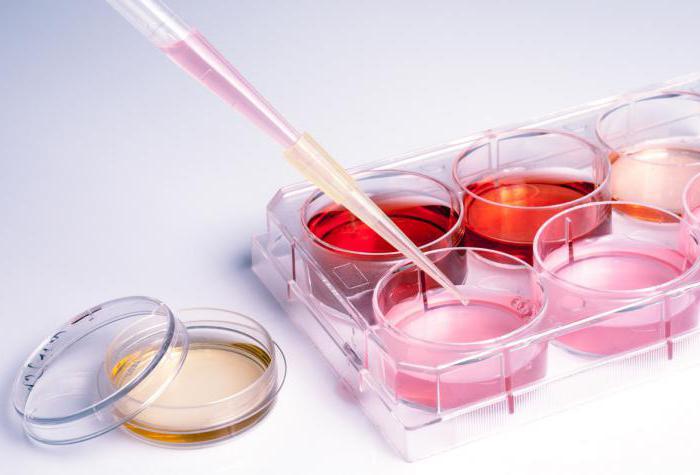
In addition, some bacterial toxins (typhoid, streptococcus, etc.) as well as certain medications can provoke a decrease in the production of red blood cells. X-ray or atomic irradiation, tumor processes in the bone marrow and bone tissue in children and adults, as well as systemic blood diseases lead to a dangerous disruption of the process of their renewal. Low blood cell counts are often observed in patients after a course of chemotherapy.
A decrease in the number of red blood cells occurs as a result of bleeding or hemolysis. Minor bleeding is not able to radically affect the quantitative indicators of cells. In any case, the indicators return to normal in a short period of time.
With significant external and internal injuries, the level of red blood cells decreases due to bleeding, which can be either hidden or obvious.
Uterine bleeding occurs as a result of abortions, miscarriages, difficult childbirth, and after surgery on the female genital organs. Anal fissures and hemorrhoids can become a source of blood loss and, as a result, the development of anemia or anemia.
Significant blood loss sometimes goes unnoticed by a person. This situation occurs due to complications of gastric or duodenal ulcers. Also, the source of bleeding can be any part of the gastrointestinal tract. Gastrointestinal bleeding sometimes occurs as a result of internal damage to blood vessels and is associated with varicose veins of the esophagus and stomach, systemic lupus erythematosus, rheumatism, atherosclerosis, thrombosis, etc.
To diagnose internal gastrointestinal bleeding, you should pay attention to factors such as vomiting and stool. In case of stomach problems, vomit has a characteristic appearance in the form of “coffee grounds”
Intestinal bleeding is expressed in tarry stools.
One of the types of disruption of the vital activity of red blood cells is hemolytic anemia. As a result of excessive cell destruction, bilirubin is formed, which negatively affects the body.
This condition can be either hereditary or acquired. With a hereditary factor, erythrocyte membranopathy may be observed, i.e. violation of their structure.
Symptoms and treatment for anemia
If the level of red blood cells in the blood is low, then the person is worried about incredible fatigue and weakness.
But, in addition to these symptoms, the following health problems also indicate anemia:
- the desire to sleep that haunts you from morning to evening;
- low pressure;
- icy skin that feels damp;
- rapid pulse;
- acquisition of a pale shade of skin;
- fainting (due to chronic anemia);
- inhibition of reactions and slowness in action.
To cure a person of anemia, doctors first find out the cause of the disease. For this purpose, the patient is sent for additional, more detailed tests and asked to undergo instrumental examinations.
The main importance in determining the causes of red blood cell deficiency is given to colonoscopy, fibrogastroscopy and ultrasound examination of the abdominal cavity and pelvic organs.
A woman, if she suffers from heavy and long menstruation, is referred to an appointment with a gynecologist.
Treatment methods completely depend on the reasons that led to the deficiency of red blood cells in the blood.
To speed up the patient's recovery from anemia, doctors prescribe medications containing iron and vitamins B12 and B9.
Video:
If doctors determine that a sick person has a disorder in the formation of red blood cells, then they say to use medications that promote the formation of red blood cells.
In case of acute blood loss, medications will not be of any use, so in this case, doctors treat the patient with surgery and blood transfusions.
When the cause of a decrease in the number of red blood cells is an inflammatory process due to infection or a virus, doctors use drugs for treatment that destroy harmful microorganisms, vitamins and agents that strengthen the immune system.
If a blood test and additional studies show that the reduced red blood cell count was due to severe blood loss, then doctors urgently restore the composition and quantity of the person’s liquid connective tissue.
To recover from heavy bleeding, the patient must act independently: eat high-calorie foods, including vegetables, fruits, meat and dairy products.
Video:
You can’t overeat if you have this problem. The diet should not include foods that irritate the mucous membrane of the digestive organs, because the sick person’s body is weak. Therefore, during treatment for anemia, you should avoid exotic foods and spicy dishes.
So, diseases associated with a drop in the level of red blood cells in the blood are treated under the strict supervision of a doctor, because many ailments, such as anemia and cancer, lead to dire consequences.
3082 2
Treatment
Erythrocytopenia can be eliminated using conservative therapeutic methods, but to fully get rid of this problem it is necessary to eliminate the pathological etiological factor.
Regardless of the reason, you can increase your red blood cell count by:
- taking medications – often these are vitamin and mineral complexes;
- blood transfusion;
- adherence to a therapeutic diet;
- use of traditional medicine recipes.
People with a low red blood cell count are advised to enrich the menu:
- legumes;
- fatty fish;
- seafood;
- lentils and buckwheat;
- fresh vegetables;
- dried fruits;
- egg yolks;
- offal;
- green tea and cocoa;
- red meats;
- nuts and pumpkin seeds.
Unconventional treatment involves preparing medicinal drinks at home based on:
- lungworts;
- burnet roots;
- rosehip;
- strawberry or blackberry leaves;
- wheat grains;
- red clover;
- nettle;
- St. John's wort;
- chokeberry berries.
Particular attention to the choice of treatment tactics is given in cases of a decrease in red blood cells in the blood during pregnancy and in children.
A drop in normal indicators: how does this manifest itself?
The number of red blood cells in the bloodstream constantly fluctuates - this
not a constant value, the indicator may change towards a decrease for a number of reasons. A natural deviation is considered to be a decrease in red blood cells after repeated heavy intake of liquid or food containing moisture in large quantities. In women, the level of red blood cells and hemoglobin can decrease during pregnancy. A deficiency of red cells is detected if their normal indicators are reduced, namely:
- For newborn babies, the norm is from 4 to 7.5 μ/l;
- In children up to adolescence (approximately 13 years old) - from 3.5 to 4.6 μ/l;
- In adulthood, there is a slight difference between the data of men and women: For men, this
number is from 4.2 to 5.2 μ/l, for women - from 3.6 to 4.8 μ/l. - The normal erythrocyte count in the elderly is defined as 4–4.3 μ/l.
If, during a detailed laboratory examination in a blood
(RBC) a lower value is detected - there is reason to suspect the development of anemia or other unfavorable health scenarios.
The first signs that red blood cells
in
the blood
can be noticed independently if you are attentive to any deviations from the usual state of health.
When the level of red blood cells in the blood
becomes below normal, in the general condition of a person, their shortage is manifested by the following signs:
- Severe pallor of the skin and mucous membranes;
- Low pressure;
- Increased drowsiness;
- Constant feeling of weakness, some inhibition in usual actions;
- Constantly occurring infectious / colds;
- Feeling of constant fatigue.
With anemia (the disease creates low hemoglobin), the symptoms are similar, but if the disease is chronic, the body gradually adapts to a decrease in the number of red blood cells. The disease in this case is expressed by severe fatigue, headaches and frequent dizziness. A further decrease in red cells can cause fainting. Anemia clearly manifests itself after a large loss of blood, or due to an acute deficiency of iron in the body.
It is important to know that the listed symptoms are an indicator not only of anemia, but also of more serious ailments that have an oncological basis - myeloma, leukemia, or the presence of metastases formed during tumor growth
Reduced red blood
- a serious reason to contact a medical institution in order to conduct the necessary research and diagnose the disease accurately and quickly.
In medicine, it is customary to distinguish between an absolute and a relative decrease in red blood cells.
In absolute terms, the number of red blood cells is reduced due to the specific work of the body (red cells initially produce little of this component). blood thinning process is to blame for the relative decrease
,
this
phenomenon in most cases goes away without the need for medical intervention.
are two special cases of low red blood cell count:
pregnancy (especially in the last months, when levels can be reduced by a lack of vitamin B12 or iron) and their lack in the child’s bloodstream (here medical measures must be taken immediately!).
Reduced red blood cells in the blood
due to diseases of the kidneys or genitourinary system are determined visually - the excreted liquid will have a reddish tint or a completely unusual brown color.
Normal red blood cell counts
In adults, norms are classified by gender, while in children they depend on age. The highest content of red blood cells is in newborns. This is explained by the need for increased amounts of oxygen during intrauterine development.
After birth, red blood cells begin to disintegrate and are replaced by new ones. Gradually, in infants, the RBC level decreases and completely stabilizes by 3 years. Constant values are maintained up to 12-14 years.
Children's reference values (10^12/l)
| Child's age | 1 Week | 1 month | 1 year | 3-12 years |
| Norm | 4,0-6,6 | 3,0-5,4 | 3,6-4,9 | 3,5-4,7 |
Gender differences in indicators in adults are due to the influence of the reproductive system on hematopoietic processes in the body. The norm of red blood cells for men of fertile age is 3.9-5.0 (10^12/l). The highest concentration is 4.2-5.8(10^12/l) in young men from 18 to 25 years old.
A slight decrease is allowed in men after 50 years - 3.9-4.8(10^12/l). Women's erythrocyte indicators are lower than men's, since due to physiological characteristics the blood is renewed more often. Reference values for adult women are 3.6-4.7(10^12/l), for elderly women – 3.6-4.2(10^12/l).

Reduced levels of RBC and hemoglobin are observed in women in the second and third trimester of pregnancy, since it is necessary to provide the child with sufficient oxygen and nutrients. The authorized discrepancy between the indicators for a pregnant woman and the norm is 0.5-1(10^12/l).
Important! If the results do not meet the standards, the patient is required to take the test again and undergo additional examination.
Why downgraded?
Reduced red blood cells in the blood are a consequence of physiological and pathological processes. A condition in which there are fewer blood cells than normal is called erythropenia. Physiological reasons: pregnancy and menstruation in women, a sudden change in diet with insufficient meat consumption.
Analysis shows a reduced content of corpuscles in people who often drink alcohol and smoke. Certain medications and their long-term use can affect the fact that the cells are lower than normal. But if the percentage of FL red blood cells is constantly reduced, this is a sign that pathological processes are occurring in the body.
Acute or chronic blood loss
Low red blood cells in the blood are observed during bleeding that occurs as a result of trauma or wounds. Chronic, extensive bleeding can be asymptomatic; the only thing that indicates internal bleeding in the patient is slight weakness and a low level of blood cells in the analysis. Bleeding leading to a decrease in the concentration of corpuscles occurs when:
- anal fissures, acute and chronic hemorrhoids;
- ulcer of the duodenum, stomach;
- varicose veins in the esophagus;
- systemic lupus erythematosus;
- rheumatism;
- atherosclerosis.
A strong decrease in the concentration of red blood cells is observed during uterine bleeding caused by miscarriages, abortions, and surgical interventions. If the bleeding was minor and went away on its own, the cell level will return to normal within a fairly quick period of time.
Insufficient production of red blood cells
A constantly low level of cells in the blood is observed with dysfunction of the bone marrow, which cannot produce them in the required quantity. The cause is cancer of the bone marrow. Insufficient production of red blood cells may be due to the fact that the body does not have vitamin B12, or its concentration is low.
Hereditary blood diseases
The fact that few red blood cells are constantly found in the blood means the presence of congenital blood diseases, which include:
- leukemia;
- hereditary fermentopathy;
- membranopathy;
- hemolysis;
- sickle cell anemia.
In this case, the child will have a clinical picture corresponding to the disease; an insufficient level of red blood cells is detected after birth.
Enhanced Destruction
Red blood cells in the blood are low due to abnormal processes in the body. This means that the bodies are produced in full, but quickly die under the influence of a number of factors. The latter include autoimmune diseases, when the body produces antibodies that attack its own blood cells.
Increased destruction of corpuscles is observed in diseases such as splenomegaly (enlarged spleen). Red blood cells, due to their plasticity, can pass even through those organ vessels that are much smaller in diameter. But due to hereditary membranopathy, they lose their elasticity, cannot pass through the vascular walls, which is why they settle in the sinuses, where they are actively destroyed by macrophages of the spleen.
Infection
A decrease in the number of red blood cells is observed in a number of infectious diseases:
- rubella;
- cytomegaly;
- congenital syphilis;
- malaria;
- toxoplasmosis.
Infectious pathogens destroy the bodies, leading to a decrease in their numbers.
Oncology
If the number has decreased to a critical level, this may be a sign of the development of cancer in the body. A tumor can develop in the bone marrow, leading to its dysfunction and inability to produce cells in the required quantity. This clinical picture is observed in leukemia, a malignant blood pathology. A low number of red blood cells is typical during chemotherapy.
Autoimmune diseases
When the body produces antibodies that attack its own red blood cells, autoimmune anemia develops. Such diseases include:
- systemic lupus erythematosus;
- Hodgin's lymphoma;
- rheumatoid arthritis;
- lymphocytic leukemia in a chronic course.
Taking certain medications
Long-term use of antibacterial drugs: Corvalol, cytostatics and analgesics can affect the concentration of erythrocyte bodies, leading to a decrease in their number.
Normal red cells in the blood
Like any other indicator, this one has its own normal limits. Everything that goes beyond the limits is either a deviation or a temporary norm due to some physiological changes in the body.
Normal indicators in women
A woman’s normal level should be within the following limits: 3.7-4.7x1012/l. The average lifespan of red cells is 120 days, then they are localized in the spleen and die (subject to hemolysis). At the same time, red bone marrow is constantly involved in the formation of new cells, due to which their number in the blood remains almost constant.
The result of the analysis largely depends on the phase of the cycle in which the analysis was carried out. For example, during menstruation, when physiologically normal blood loss occurs, the number of these formed elements (and hemoglobin) may decrease slightly. If menstruation is heavy, the risk of developing anemia is high. The normal value in the blood test of women after 40 years ranges from 3.6-5.1x1012/l. But with age, women may develop a number of diseases that to a certain extent affect the processes of hematopoiesis (blood formation). As a result, women may experience increases and decreases in rates.
The indicator in women during pregnancy can also change. The number of red cells during pregnancy can decrease to 3.5 and even 3.0 × 10¹²/l. It should be understood that this does not always indicate pathology, but it is worth monitoring the indicator.

The norm of red blood cells in the blood of men
The norm for a healthy adult male should correspond to a value in the following range: 4.5x1012/l-5.6x1012/l. The lifespan of one element is about 4 months.
It is important to remember that over the years (most often after 40 years) people begin to develop or progress diseases that directly or indirectly affect hematopoiesis. These include chronic kidney disease, osteoporosis, chronic diseases of the respiratory system, etc.
The listed diseases can lead to changes.

Norm of red blood cells for children
Depending on the age and gender of the child, the norms for this indicator may vary.
The norm for children under 1 year is indicated in the table.

Norm for children from 1 to 12 years.

The norm is for adolescents aged 12 to 15 years.
It is believed that the performance of children begins to correspond to that of adult men and women from the age of fifteen.

Reasons for the decline in indicators
A decrease in the number of RBCs and the appearance of transformed cellular forms is observed as a result of:
- hereditary diseases;
- lack of protein in the diet or impaired absorption;
- violation of the intake or absorption of vitamin B12, folic acid;
- lack of hormones - thyroxine, corticosteroids, testosterone, growth hormone;
- deficiency of microelements zinc, copper, selenium;
- lack of iron intake or absorption.
Deficiency of vitamins B12 and B9 leads to the formation of large cells with a fragile, non-elastic membrane. Such a cell can carry oxygen, but its penetration into the smallest blood capillaries is difficult.
When passing through the spleen, deformed Er are destroyed first. The life of transformed cellular forms is reduced to 40–60 days from the usual lifespan of normal Er, which also leads to a decrease in the overall size of this population.
The reasons for the decrease in red blood cells in the blood are:
- acute bleeding;
- long-term chronic blood loss due to stomach ulcers, heavy menstruation in women;
- chronic infectious diseases;
- pregnancy, especially in the third trimester;
- alcoholism;
- treatment with analgesics, cytostatics, antibiotics, taking Corvalol, phenobarbital;
- dietary features – a large amount of legumes in the diet, a vegetarian diet;
- protein intoxication in kidney disease, caused by impaired excretion of protein from the body in the urine;
- the presence of autoantibodies to erythrocytes in plasma;
- multiple myeloma.
If antibodies to the receptors of one’s own red blood cells (autoantibodies) are present in the blood, then autoimmune hemolysis develops. The cause of autoimmune destruction of cell membranes can be a blood transfusion, the administration of a drug, due to which hemoglobin is released into the plasma, and in the analysis there are not only few red blood cells, hemoglobin is critically reduced, but also a sharp increase in bilirubin is observed.
Bilirubin appears as a result of hemoglobin metabolism. Yellow coloration of the skin develops when the concentration of bilirubin increases. If the blood test shows low red blood cells and is accompanied by jaundice, then the more pronounced its symptoms, the more likely this indicates massive hemolysis.
Why are low red blood cells detected in the blood?
Red blood cells in the blood fall below normal due to insufficient production of these cells or their accelerated destruction. This condition most often indicates anemia. By the way, a similar diagnosis is made when there is a high percentage of deformed red blood cells: with hemolytic anemia, the red blood cells are spherical, and with sickle cell anemia, they are sickle-shaped. To accurately diagnose the type of anemia, erythrocyte indices are also determined: mean erythrocyte volume (MCV), volume distribution (RDW), erythrocyte hemoglobin content (MCH), erythrocyte hemoglobin concentration (MCHC). Low red blood cells in the blood are detected for the following reasons:
- acute or chronic bleeding from ulcers, polyps or tumors in the gastrointestinal tract, from the bladder, uterus (in women); in women, the causes include heavy menstrual bleeding;
- chronic inflammatory diseases;
- Deficiency of iron (the most common cause of anemia), vitamin B12 or folic acid as a result of nutritional imbalance or malabsorption. With vitamin B12 deficiency, red blood cells are increased in size (they are called macrocytes);
- disorders of the bone marrow due to toxins, radiation or chemotherapy, infections and cancer (leukemia, multiple myeloma, lymphoma or other types);
- injuries;
- autoimmune diseases (systemic lupus erythematosus, rheumatoid arthritis) or red blood cell defects (thalassemia, hereditary spherocytosis, etc.);
- renal failure and chronic kidney disease (with a decrease in the production of the hormone erythropoietin produced by the kidneys, which stimulates the formation of red blood cells).
Another reason why red blood cells may be low is excessive fluid intake. If an increased volume of fluid enters the bloodstream, the concentration of this type of cell in it decreases. In women, red blood cells may be low during pregnancy due to increased fluid volume in the body. Even normally, women have slightly lower levels of these cells than men.
Treatment of low red blood cells, diet and nutrition
It is possible to restore the normal content of red blood cells in the blood by changing the diet only if the cause of their decrease was an unbalanced diet. In this case, a special diet includes foods rich in vitamin B12, iron and folic acid. Sometimes it is necessary to take these substances in tablet form. Chronic deficiency of these elements, despite adequate nutrition, can occur due to malabsorption, when the body does not absorb them from food. In this condition, further examination is necessary to determine the causes of malabsorption and eliminate them. Low red blood cells are a manifestation of abnormalities in the functioning of the body. Therefore, to normalize them, it is necessary to diagnose the underlying disease and treat it. When red blood cells drop to a critical level, a blood transfusion is performed.
Functional load of RBC in the body
Blood consists of liquid plasma and a cellular part filled with formed elements - white cells (leukocytes), blood platelets (platelets) and red cells (erythrocytes). Red blood cells represent the largest group of formed elements.
The bone marrow is responsible for the production of red blood cells. The formation of new cells is a continuous process. Destruction of cells that have completed their mission occurs in the spleen and liver. The key purpose of the RBC is to transport oxygenated hemoglobin from the lungs to the body's tissues.
In the opposite direction, red blood cells deliver hemoglobin saturated with carbon dioxide, thus ensuring respiratory function and stability of the acid-base state. When the number of red blood cells in the blood decreases, oxygen levels decrease. This stimulates the kidneys to produce the hormone erythropoietin, which is transported through the bloodstream to the bone marrow and causes it to produce new cells.
In addition, red blood cells take part in the delivery of useful substances (amino acids, vitamins, glucose) to the body's cells and in protecting blood vessels from the negative effects of free radicals. In clinical hematology, not only the total number of RBCs is taken into account, but also several other indicators related to red blood cells:
- ESR (erythrocyte sedimentation rate). The parameter determines the rate of separation of the cellular part of the blood from the plasma and precipitation. In addition, ESR is an indicator of the ratio of blood proteins to each other. A high ESR is considered a marker of the inflammatory process in the body.
- HB (hemoglobin). Iron-containing two-component protein. The main purpose of NV is gas exchange. 90% of hemoglobin is concentrated in red blood cells. In the lungs, NV captures oxygen molecules and, with the help of red blood cells, delivers them to cells and tissues. “On the way back,” hemoglobin captures carbon dioxide molecules, and red blood cells deliver it to the lungs for processing and removal from the body. The amount of NV is a marker of blood oxygen filling. The parameter values directly depend on the number of RBCs. If there are few red blood cells, there will be low hemoglobin.
- RET (reticulocytes or immature red cell precursors). If the number of reticulocytes is abnormal, hematological diseases are suspected.
- HCT (hematocrit). It is used to determine the degree of saturation of a biofluid (blood) with red blood cells, that is, the thickness of the blood. Analyzed as a percentage of the volume of formed elements and plasma. The hematocrit level is closely related to the concentration of red blood cells. Inconsistency of hematocrit with norms is a sign of blood pathologies, internal bleeding, dehydration, and heart attacks.
- Erythrocyte indices. MCV – average RBC volume, MCH – average hemoglobin content in one cell; MCHC is the average hemoglobin concentration in the total mass of RBC.
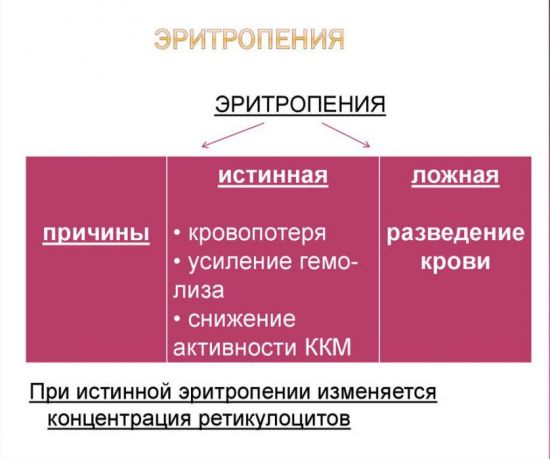
The evaluation of OKA results is always carried out in a comprehensive manner, that is, all research indicators are taken into account. Clinical analysis does not diagnose a specific disease, but indicates organic disorders.
Types of erythropenia
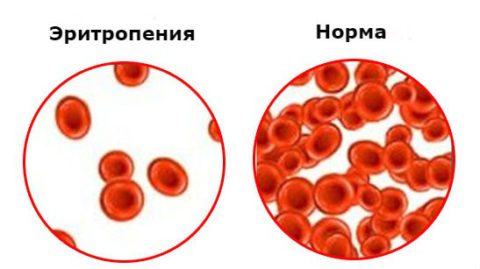
Normal red blood cell count with relative erythropenia
Erythropenia can be relative (physiological) and absolute (pathological).
1. Relative.
A decrease in level may be caused by too much fluid entering the body. At the same time, the blood increases in volume and thins out. In a unit of blood being tested, the level of red blood cells will be reduced, but the total volume of all blood in the body will not change.
During pregnancy, a woman's body increases the volume of circulating blood, and fluid in the body is retained, which leads to a natural decrease in the level of blood cells per unit of measurement.
2. Absolute.
Too low a level of indicators indicates disturbances in the blood circulation process. This condition may occur due to insufficient production of blood cells by the bone marrow or due to destruction of red blood cells during their movement through the capillaries.
The bone marrow produces more than 2 million red blood cells every second. Violation of this process is associated with a lack of components necessary for this. The reason may be either an insufficient supply of microelements with food or a pathology that affects their digestibility.
Blood cells live for about 3-4 months. There is a wide range of factors that can provoke their premature destruction. Various infections suppress their activity with the help of toxins, and in a number of diseases the body itself begins to produce cells that destroy red blood cells.
Main reasons for deviation
A low red blood cell count can be of a relative or absolute type. With the latter option, the body produces a small amount of red blood cells. This occurs due to accelerated cell death or blood loss.
With relative, a false decrease in red blood cells is possible. This often happens with blood thinning disorders. This is usually observed during pregnancy. Therefore, during pregnancy, women's hemoglobin often drops.
Experts identify the following reasons for the decrease in red blood cells:
- hemolysis;
- hypovitaminosis;
- anemia;
- pyelonephritis;
- nephritis;
- leukemia;
- parasitic infestations;
- glomerulonephritis;
- urolithiasis disease;
- cirrhosis;
- colitis;
- gastritis;
- Crohn's disease;
- hemoglobinopathy;
- endocrine disorders.
The number of red blood cells decreases with a genetic predisposition, with such hereditary diseases of the circulatory system as microspherocytosis and ovalocytosis.
Another factor that provokes pathology is a deficiency of B vitamins or iron.
Red blood cells in children's blood also decrease. The reasons may be:
- poor nutrition;
- previous surgery;
- blood diseases;
- kidney diseases.
In men, the pathological condition can develop as a result of prostate adenoma.
In women, the red blood cell count decreases during menstruation.
Other factors that cause a deficiency of red cells in a blood test in an adult include:
- oncological diseases;
- vegetarian food;
- blood loss during operations, wounds, fractures;
- internal bleeding;
- weakening of the immune system;
- use of certain medications;
- use of antibiotic therapy;
- autoimmune diseases;
- blood clotting disorder;
- diseases of the intestines, urinary system.
If the bone marrow produces cells at a low rate, this also leads to erythropenia.
Main symptoms of anemia
With erythropenia and hypohemoglobinemia, the following symptoms are observed:
- asthenic syndrome;
- insomnia (insomnia);
- frequent attacks of headaches, dizziness;
- decreased libido;
- erectile dysfunction in men, menstrual irregularities in women;
- depression of brain activity;
- abnormal heart rate (tachycardia or bradycardia).
External manifestations include pallor, thinning and hair loss, and brittle nail plates.
Reasons for the fall in the number of red blood cells in the blood in children
A low level of red blood cells in the blood can also be diagnosed in children. The reasons may be: malnutrition, previous surgery, blood or kidney diseases. Most often, erythrocytopenia occurs as a consequence of a violation of the synthesis of red blood cells in the bone marrow - the result of vegetarianism, hypovitaminosis, tumors, intoxication, including drugs, and radiation.
Hemolysis is another common cause of a decrease in the concentration of red blood cells in the bloodstream due to chronic inflammation, infections, systemic collagenosis, and poisoning of various origins. Finally, the number of red blood cells in a child may change due to increased excretion of red cells from the body - bleeding, impaired renal function, gastrointestinal tract, trauma, fractures, surgery.
If we talk about specific diseases, then these are:
- hemoglobinopathies;
- anemia of various etiologies;
- genetic inherited problems, including hemophilia;
- myxedema;
- nephritis, chronic renal failure;
- infectious processes;
- collagenoses;
- multiple myeloma;
- erosive and ulcerative processes in the intestines.
Symptoms
A condition where red blood cells are low is characterized by the appearance of some clinical signs. However, their peculiarity is that they are nonspecific and weakly expressed, which is why they can be easily ignored by a person.
However, this disorder is accompanied by:
- lethargy and weakness of the body;
- rapid fatigue and decreased performance;
- constant drowsiness;
- cold skin;
- release of cold sweat;
- decreased blood tone;
- pallor of the skin and visible mucous membranes;
- increased heart rate;
- lethargy;
- slowness of action;
- pre-fainting;
- loss of consciousness;
- headache;
- dizziness;
- angina pain in the heart;
- irritability.
In addition to the above symptoms, children may experience:
- refusal to eat;
- tearfulness;
- growth retardation;
- slight increase in temperature indicators.
